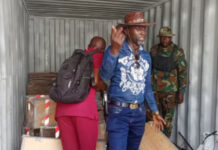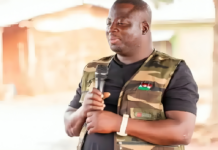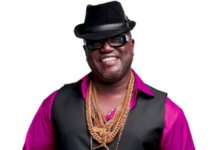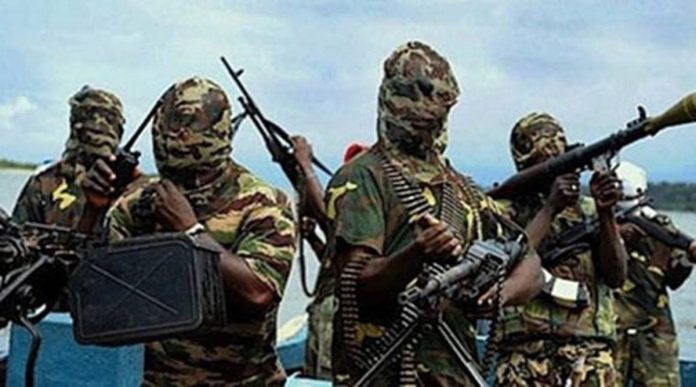
By Dr. Felix Dela Klutse
Africa is a land of breath-taking natural beauty, rich cultural heritage, and diverse people. However, it is also a region that has been plagued by one of the most heinous crimes against humanity – sexual slavery, which involves exploitation and coercion of individuals into engaging in sexual activities against their will.
The subjugation of innocent young girls and women to a life of forced sexual service is a tragic reality that continues to devastate countless communities across Africa. The UN Security Council has also passed several resolutions aimed at preventing and combating sexual slavery on the continent during conflicts. However, this despicable practice and continues to thrive despite the efforts of activists and governments, as well as the international community to put an end to it.
According to a report by the United Nations Office on Drugs and Crime, up to 62 per cent of all human trafficking victims in Africa are subject to sexual exploitation, which often involves the use of force, fraud, or deception. The majority of the victims of sexual slavery in Africa are women and girls, who are often lured with false promises of employment or better living conditions.
Poverty, conflict, and political instability are key factors that contribute to the prevalence of sexual slavery in many African countries. In addition, many individuals involved in sexual slavery are vulnerable and marginalized, such as refugees, migrants, women, and children. The physical and psychological impact of sexual slavery is devastating, leaving victims with long-lasting effects, including trauma, emotional distress, physical injuries, and exposure to sexually transmitted infections.
The United Nations (UN) called these sexual abuses “strategic” and a “weapon of war” with both labels carrying specific implications within the human rights discourse. The magnitude of conflict-related sexual violence against women and girls in Africa and its gendered impact is yet to be fully understood, as these crimes are massively underreported. Where women have reported these crimes, they encounter major obstacles to accessing the justice system and threats of retaliation, given the extremely high levels of impunity.
“I was sleeping when the attack on Disa started. I was taken away by the attackers, they were all in uniforms. They took dozens of other girls and made us walk for three hours. During the day, we were beaten. At night we were raped several times. The Arabs guarded us with arms, and we were not given food for three days,” a female refugee from West Darfur, interviewed in Goz Amer camp for Sudanese refugees, has stated.
The testimony of the Sudanese woman given above echoes hundreds of others, collected by this reporter during fact-finding missions to some of the African countries experiencing conflicts.
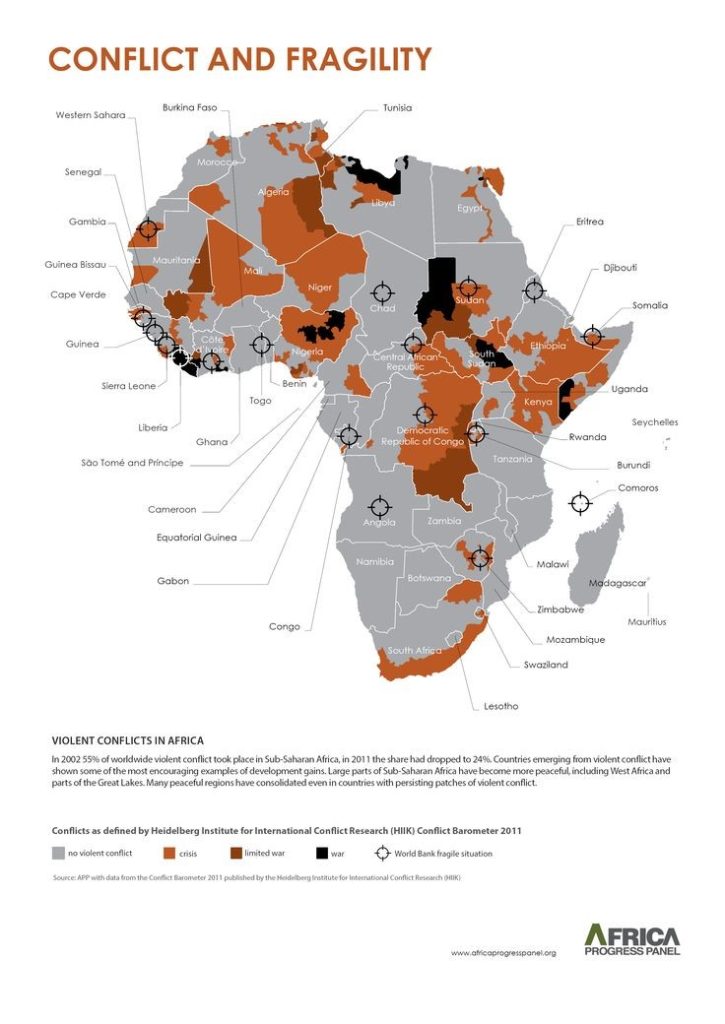
In South Sudan, an investigation carried out by this reporter revealed that, impunity for sexual and gender-based slavery, which has entrenched over decades, has reinforced pre-existing norms and patterns of discrimination against women and girls, both inside and outside of the conflict and these crimes are perpetrated by all armed actors. The UN Report on Human Right 2022 estimated that state security forces and non-state armed actors in South Sudan committed at least 63 incidents of conflict-related sexual slavery, including rape, gang rape and forced nudity.
The conflict is characterised by the fragmentation of warring parties, the proliferation of small arms and military-grade weapons, and political allegiances centred on ethnic, regional, and other group identities. In this context, humanitarian aid workers, women’s rights defenders, and civil society organizations supporting survivors of sexual and gender-based violence, consistently find themselves targeted by armed actors as well.
The funding of conflict at a national and sub-national level is linked to political elites and to the shadow parallel economy, from which they benefit. The conflict involves the deliberate expulsion of local populations from their territory, often with the intention of changing the ethnic composition and political control of the territory. Strategies have included terrorising local populations, killing, burning of villages and the looting and control of local resources, as well as rape and sexual violence.
“Women and girls in South Sudan face diverse forms of oppression including targeted killings, rape and sexual violence, slavery, forced marriage, forced procreation, forced labour, and other forms of sexual violence and inequality. Widespread violence against civilian populations has also led to large numbers of internally displaced persons, and refugee populations,” Mr. Sito Mupuse, a Human Right Activists in South Sudan has stated.
Rape and other forms of sexual slavery in South Sudan is underpinned by male dominance and privilege that constructs violence against women as permissible, along with other forms of violence. This fuels impunity for rape and sexual violence crimes and is compounded by the weakness or complete absence of state institutions, including judicial authorities, particularly at local levels.
“There is a confirmed pattern of how combatants attack villages, plunder homes, take women as sexual slaves and then set homes alight – often with people in them,” Yasmin Sooka, Chair of the Commission on Human Rights in South Sudan has stated in an interview.

Apart from South Sudan, almost all actors involved in Africa’s armed conflicts deployed sexual slavery or violence as a war tactic. According to UNICEF, 25 per cent of those targeted by sexual violence are children, including girls as young as seven. Elderly and pregnant women have also been raped.
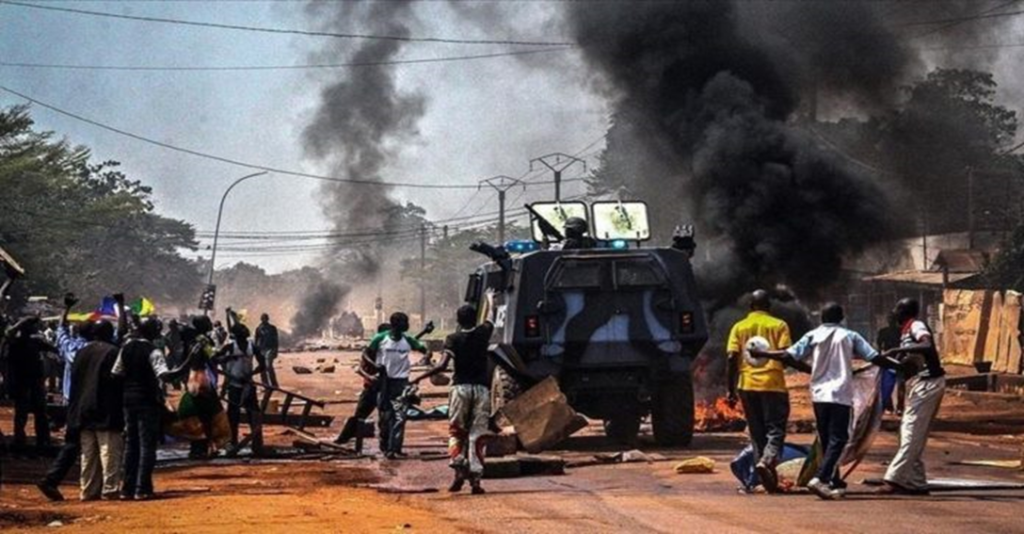
In Democratic Republic of Congo (DRC), the reporter chanced on a report of the UN Security Council authorized United Nations Multidimensional Integrated Stabilization Mission. In DRC, conflict-related sexual violence remained widespread – at least 1,100 women were raped in North Kivu and Ituri alone between January and April 2022, according to the 2021 UN Report on Human Rights Violations. Medical workers are concerned about rising incidents of sexual brutality against women in the DRC, which are resulting in mounting rates of trauma, and sexually transmitted infections (STIs).
Although cases of sexual violence against women have been widespread in eastern DRC over the past decade, humanitarian workers say rape is becoming more violent and more common, yet the world continues to pay only lip service to the crisis in the central African country. Reports of gang rapes, purposeful mutilation of women’s genitalia, and killings of rape victims are commonplace in eastern Congo, especially in the north Kivu province, where fighting has subsisted for years.
“As the security situation unravels yet again, we are seeing trends rising and multiple forms of sexual violence—from abduction, gang rape, shooting women through the vagina and forcing family members to have sex with their own relatives—are a spreading practice among military and militia groups”, Karin Wachter, an International Rescue Committee (IRC) gender-based violence adviser in the region, told this reporter.
The health consequences of sexual violence in DRC are the same as in other conflict zones: HIV transmission, unwanted pregnancy, and STIs, among others. However, what is unique to the DRC is the brutality with which the attacks are carried out. As a result, women and girls suffer from debilitating damage to their reproductive systems, resulting in multiple fistulae, as well as broken bones, severed limbs, and burns.
From a public-health perspective, the psychological and social consequences of sexual violence are equally as devastating. There are serious consequences for women’s and girls’ mental health, including depression and suicide, as well as for the family and community members who witness or are forced to participate in the violence.
The Eastern part of Congo has been unstable since 1996, when Ugandan and Rwandan forces helped Congolese rebels, led by Laurent Kabila, to overthrow the dictator Mobutu Sese Seko. A year later, the foreign armies had turned against Kabila, choosing instead to support other rebel groups and militia against Kabila. Although peace accords that saw Ugandan and Rwandan forces exit Congo in 2003 pacified most of the country, eastern DRC, particularly north and south Kivu, have remained at war, with a myriad of militia and rebel groups taking part. Exact figures of the violated women are impossible to establish, but even with all the shortcomings in the collection of statistics, the available figures are shocking.
Indeed, returning from north Kivu in September last year, Stephen Lewis, former UN Special Envoy for AIDS in Africa, and current co-director of AIDS-Free World, remarked at a press conference in Kenya, “There is no precedent for the insensate brutality of the war on women in Congo. The world has never dealt with such a twisted and blistering phenomenon”.

Last year, a survey by the UN Population Fund had revealed that 50,000 rape cases had been reported at the various hospitals in the country. At Bon Marché hospital in Bunia, more than 7400 rape victims were treated over a 4-year period, including 2708 between January 2021, and July 2022.
At Congo’s Rutshuru hospital, Médecins Sans Frontières (MSF), an international independent organisation that provides medical assistance to people affected by conflict, has provided specialised care to more than 600 victims of sexual violence since January 2022. In Kayna town, Lubero district, where MSF run a 70-bed hospital, on average, 66 victims of sexual violence were treated each month since December 2021. In the south Kivu province, the hospital reports states that 27,000 sexual assaults were reported in 2021 alone.
Dr. Patrick Hourtane, Sexual Violence Coordinator for MSF, told this reporter that, the common treatments for rape victims include provision of antiretroviral prophylaxis within 72 hours of exposure to reduce the risk of HIV infection, and prophylactic antibiotics to protect against common STIs such as syphilis, gonorrhoea, and chlamydia. Health workers also administer tetanus and hepatitis-B vaccinations and the morning after pill; and treat physical trauma such as lesions, wounds, or other injuries. It has been estimated that the military forces in the DRC have one of the highest rates of STIs of any military group in the world, yet studies have shown only 30 per cent of female rape cases undergo prophylactic treatment against HIV.
Around 16,000 Congolese have recently fled their country into Uganda and 800, 000 others have been internally displaced in north Kivu due to the conflicts. Many indigenes interviewed tell tales of women who die after being sexually assaulted and held as sex slaves for months with their private parts shattered by gun butts.
Dr. Sarah Chynoweth of the Women’s Commission for Refugee Women and Children blamed the UN, which has a force of 17,000 peacekeepers in Congo, and the Congo government, for doing little to stop the sexual violence. In DRC, a raped woman is often victimised and shunned by her husband and the community and in Kivu community, the victims are afraid of the perpetrators because they are still around and most of them are armed.
“There is a lot of violence going on and victims do not report it because it is considered social death,” she stated.

She said eliminating sexual slavery in Africa requires a multifaceted approach that focuses on prevention, protection, prosecution, and partnerships between governments, NGOs, civil society organizations, and the private sector. She said prevention efforts should target the root causes of sexual slavery, such as poverty, gender inequality, and cultural norms that perpetuate sexual exploitation.
Dr Chynoweth further proposed that protection efforts should focus on the victims of sexual slavery and provide them with access to legal services, education, and rehabilitation. Prosecution efforts must be intensified to ensure that perpetrators of sexual slavery are held accountable for their actions. She believes that together, the proposed interventions can help to create a future where sexual slavery is eradicated and victims of sexual exploitation receive the support, they need to rebuild their lives.








